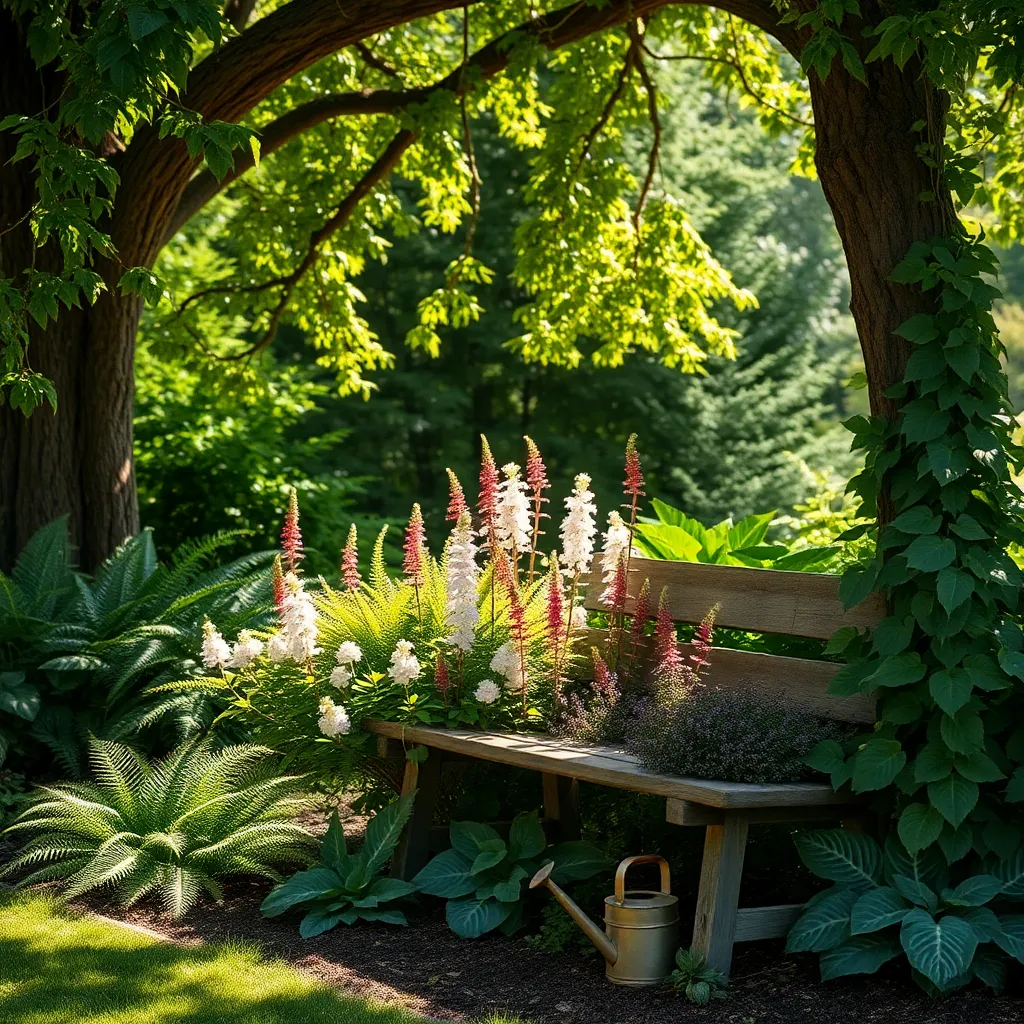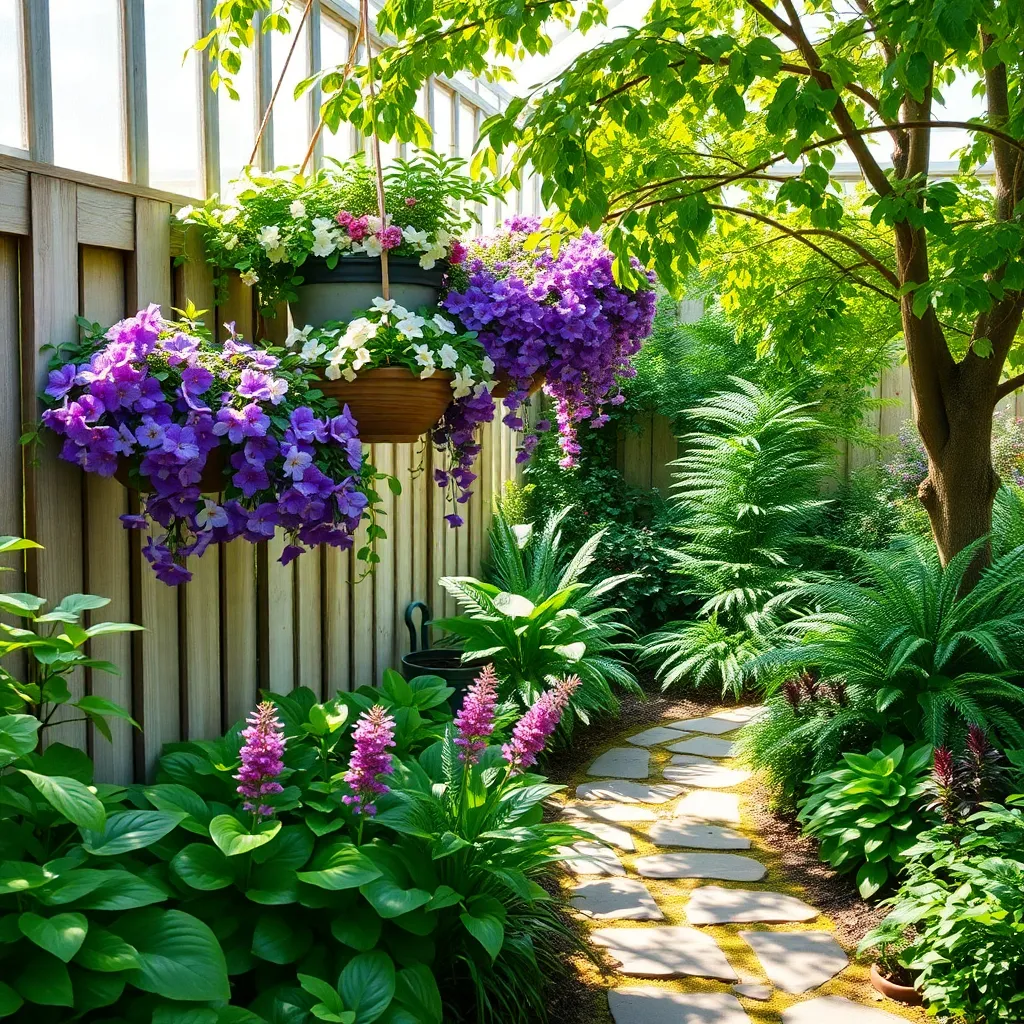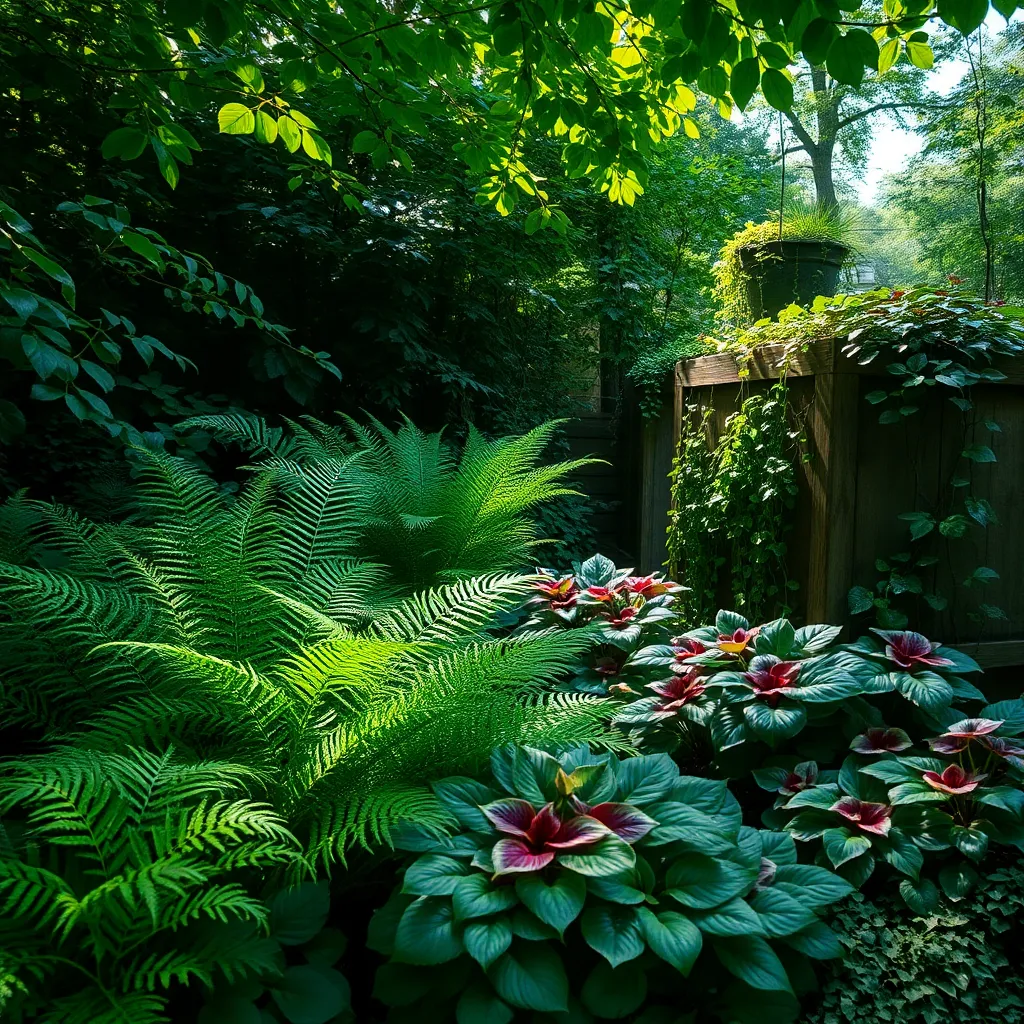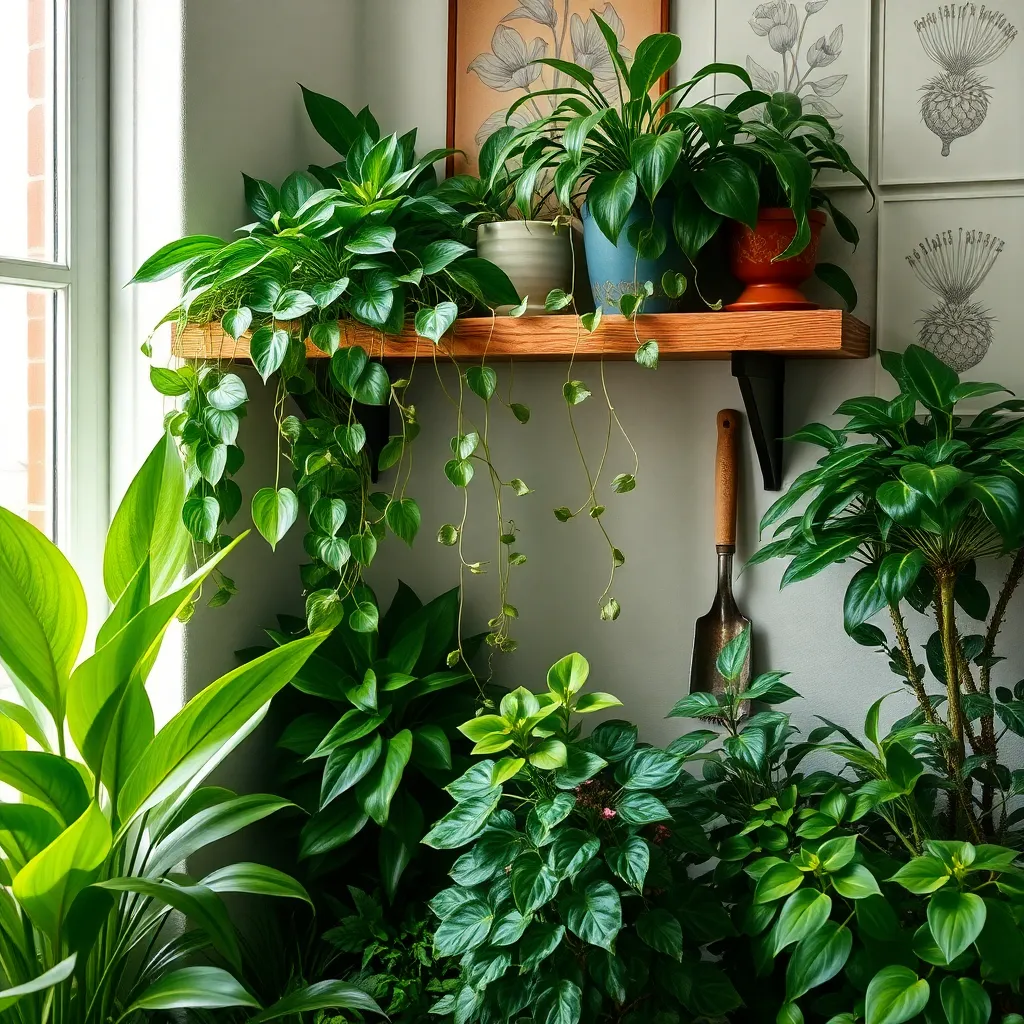There’s a unique magic in shaded gardens, where dappled sunlight dances through leaves and creates a serene, inviting atmosphere. Whether you’re just starting your gardening journey or have been nurturing plants for years, discovering the beauty and potential of shade-loving plants can transform those less-sunny corners into vibrant, lush havens. Embracing the art of shaded gardening not only maximizes every inch of your outdoor space but also introduces a tapestry of textures and colors that thrive in lower light conditions.
In this article, we’ll explore a selection of stunning plants that flourish in the shade, proving that lack of sunlight doesn’t mean a lack of beauty. From the delicate textures of ferns to the striking foliage of hostas, you’ll find inspiration and practical tips to create a thriving shaded garden that complements your landscape. With our guidance, you’ll learn how to choose the right plants for your specific environment, understand their unique care needs, and design a garden that captivates with its subtle charm.
No matter your level of expertise, this exploration of shade-loving plants will enrich your gardening experience and expand your horticultural horizons. We’ll provide you with actionable insights and expert advice to make shaded gardening both rewarding and enjoyable. Dive into this journey of discovery, where every shadowed space holds the promise of vibrant life and endless possibility.
Understanding Shade-Loving Plant Varieties

Shade-loving plants are perfect for those corners of your garden where sunlight is scarce. These plants have adapted to thrive in low-light conditions, making them ideal for under trees or along north-facing walls.
Hostas are a popular choice for shaded areas, known for their lush foliage and ease of care. To keep hostas vibrant, plant them in rich, well-draining soil and water consistently, ensuring the soil remains moist but not waterlogged.
Ferns are another excellent option, with their delicate fronds adding texture and interest to shaded spots. They prefer consistently moist soil, so consider adding a layer of mulch to help retain moisture and reduce the need for frequent watering.
For a splash of color, consider planting Astilbes, which produce plumes of flowers in various shades. They thrive in partial to full shade and benefit from regular watering, especially during dry spells, to keep their blooms looking fresh and vibrant.
Top Flowering Plants for Shade

When selecting flowering plants for shaded areas, consider the beautiful Astilbe, known for its feathery plumes and diverse color palette. These plants thrive in consistently moist, well-draining soil and benefit from a thick layer of mulch to retain moisture and keep roots cool.
Another excellent choice is the Bleeding Heart, which captivates with its heart-shaped flowers that dangle gracefully. Plant these in rich, humus-filled soil, ensuring they receive regular watering, especially during dry spells, to maintain their lush appearance.
For a pop of vibrant color, try planting Begonias, which are versatile and easy to grow in shaded conditions. They prefer slightly acidic, well-draining soil and should be watered regularly, allowing the top inch of soil to dry out between waterings to prevent root rot.
Hostas are a classic choice for shaded gardens, offering an array of leaf textures and colors. To achieve the best results, plant them in fertile, well-draining soil, and provide consistent moisture, as dry conditions can lead to leaf scorch and reduced growth.
Foliage Choices for Dim Spaces

For those dim corners of your garden or indoor spaces, consider incorporating plants with striking foliage that thrive without direct sunlight. Ferns, such as the Boston Fern, are excellent choices due to their lush, feathery fronds that can brighten up any shaded area.
Placement is key when dealing with foliage plants for dim spaces. Ensure they receive indirect light, as too much shade might hinder their growth, while direct sunlight could scorch their leaves.
Soil composition plays a critical role in the health of these plants. Use a well-draining potting mix, rich in organic matter, to support the nutrient needs of shade-loving foliage.
For an advanced tip, consider using a pebble tray to increase humidity around your plants. This technique is particularly beneficial for tropical foliage plants, as they thrive in moist environments.
Watering should be consistent but not excessive, as overwatering can lead to root rot. Allow the top inch of soil to dry out between waterings to maintain optimal moisture levels.
Supplement your garden or indoor space with Spider Plants, which are not only low maintenance but also excellent air purifiers. These hardy plants can adapt to low light conditions, making them perfect for less sunny spots.
Caring for Low-Light Garden Favorites

When caring for low-light garden favorites, it’s crucial to understand their specific needs to ensure healthy growth. Most shade-loving plants prefer well-draining soil enriched with organic matter, so consider mixing in some compost before planting.
Watering is another key aspect of maintaining these plants, as overwatering can be detrimental. It’s best to keep the soil consistently moist but not soggy; check the top inch of soil and water when it feels dry to the touch.
For those looking to boost their shade garden, fertilizing can make a significant difference. Use a balanced, slow-release fertilizer in early spring to promote lush growth and repeat in midsummer for best results.
If you’re dealing with particularly stubborn shady spots, consider adding mulch around the plants. A layer of mulch helps retain moisture and suppress weeds, both of which are advantageous in low-light areas.
Advanced gardeners might explore the benefits of companion planting to enhance the vitality of their shade garden. Choose plant combinations that naturally support each other, such as pairing ferns with hostas to create a thriving ecosystem.
Designing Your Shaded Garden Oasis

Creating a shaded garden oasis begins with selecting the right plants that thrive in low-light conditions. Hostas, ferns, and astilbes are excellent choices, as they not only tolerate shade but also add lush texture and vibrant colors to your garden.
When designing your shaded garden, consider the height and spread of each plant to create a layered look. Place taller plants like hostas towards the back, and use ferns or astilbes in the foreground to ensure all plants receive adequate light and space.
Soil quality is crucial for a thriving shaded garden. Use a rich, well-draining soil mix with added organic matter like compost to enhance nutrient availability and moisture retention, ensuring your plants reach their full potential.
Watering is another critical aspect of maintaining a shaded garden. Generally, shaded areas retain moisture longer, so water your plants deeply but less frequently, allowing the top inch of soil to dry out between waterings to prevent root rot.
Advanced gardeners might consider incorporating shade-tolerant flowering plants such as bleeding hearts or hellebores to add a pop of color. These plants not only provide visual interest but also attract pollinators and blend seamlessly with the lush greens of shade-loving foliage.
To maintain a healthy shaded garden, regularly check for pests like slugs and snails, which are common in moist, shaded environments. Use natural deterrents such as crushed eggshells or organic slug repellents to protect your plants without harming the environment.
Conclusion: Growing Success with These Plants
As we explored the lush world of shaded garden spaces, we delved into five key relationship concepts: the importance of nurturing growth in low-light conditions, the resilience required to thrive in challenging environments, the beauty of diversity in plant choices, the necessity of ongoing care and attention, and the art of balancing independence with interdependence. These principles not only apply to your garden but also offer valuable insights into nurturing your personal relationships.
As your next step, consider introducing a new plant into your shaded area, symbolizing a fresh start in your relationships. This small act can serve as a reminder of the care and attention you’re committed to giving both your garden and your loved ones.
Remember to save or bookmark this article as a go-to resource for both your garden and relationship nurturing. By doing so, you ensure that these insights are always within reach, ready to inspire and guide you.
Looking ahead, let’s embrace the journey of relationship success, where growth, resilience, and understanding bloom in even the most unexpected places. Empower yourself with these insights, and watch as your relationships flourish, just like the stunning plants in your shaded haven.

